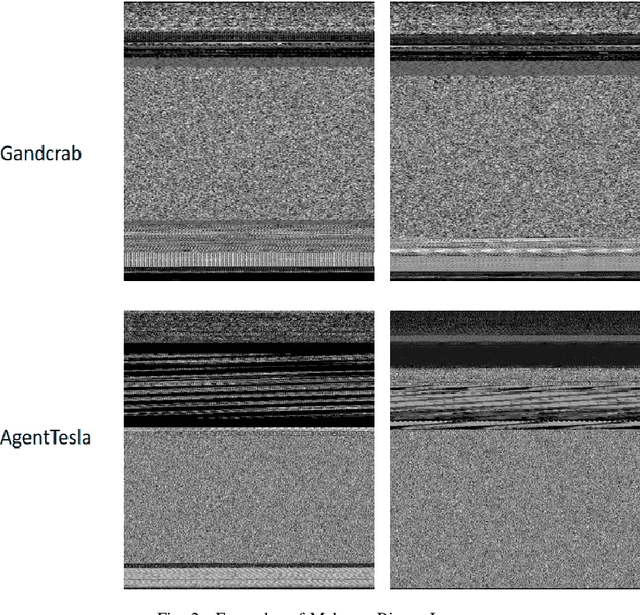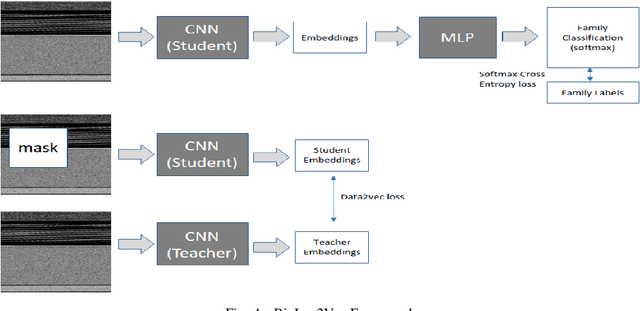Kai Keng Tay
BinImg2Vec: Augmenting Malware Binary Image Classification with Data2Vec
Sep 02, 2022



Abstract:Rapid digitalisation spurred by the Covid-19 pandemic has resulted in more cyber crime. Malware-as-a-service is now a booming business for cyber criminals. With the surge in malware activities, it is vital for cyber defenders to understand more about the malware samples they have at hand as such information can greatly influence their next course of actions during a breach. Recently, researchers have shown how malware family classification can be done by first converting malware binaries into grayscale images and then passing them through neural networks for classification. However, most work focus on studying the impact of different neural network architectures on classification performance. In the last year, researchers have shown that augmenting supervised learning with self-supervised learning can improve performance. Even more recently, Data2Vec was proposed as a modality agnostic self-supervised framework to train neural networks. In this paper, we present BinImg2Vec, a framework of training malware binary image classifiers that incorporates both self-supervised learning and supervised learning to produce a model that consistently outperforms one trained only via supervised learning. We were able to achieve a 4% improvement in classification performance and a 0.5% reduction in performance variance over multiple runs. We also show how our framework produces embeddings that can be well clustered, facilitating model explanability.
 Add to Chrome
Add to Chrome Add to Firefox
Add to Firefox Add to Edge
Add to Edge